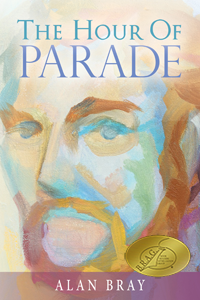ALAN BRAY
I appreciate the chance to write about this. It’s one of the most difficult and important questions I can imagine. I certainly don’t claim to have any original techniques but I can describe how I use some of the time-honored ones.
I will wake up in the early morning with a story idea, or more specifically, a character in a situation. It’s coming from dreams, I suppose. There’s that moment when I wake up and become aware of being in the bed and the light, and a strong memory will be there too. Sometimes it’s a development on a story I’m working on, sometimes it’s something entirely new. I don’t usually rush to write the idea down as it will stay with me through morning coffee, getting my daughter to the bus stop, and breakfast.
I usually begin a story with one of these images of a person doing something—as opposed to first developing a plot. I know that some experts advise outlining stories before starting to write. If writers can devise a plot first and then develop characters and scenes, I admire them. My God, it would save so much time! I’ve tried to do it, but in my hands, it always seems contrived. And the characters tend to run off on their own and do things I hadn’t planned for them. Willful creatures, indeed. I’m sure the success of it is largely a question of discipline. To me, story seems to develop out of who the characters are, so the more I know about them, the clearer the plot becomes.
I do a lot of re-reading and re-writing of what I’ve written, a time-consuming but rewarding process. I start from the beginning and read with (hopefully) a lot of focus, and this usually helps me to draw story and characters out. I read and make changes and additions until I’ve reached a certain point of exhaustion, stop, and then begin again the next day or the next. During this time, I work on other stories, and I often dream or have insights into the one that’s on break.
The tricky part of thinking about plot is the story. Whatever plot there is must be broken down into scenes, particular scenes about particular individuals. Scenes that sketch, not in real-time, but that provide glimpses into a story that is on-going. This is, I believe, the heart of fiction—what you do and don’t show. There’s the suggestion/illusion that there is a lot more than what is being shown.
But that all comes after I have a lot written down.
I wrote a lot more of The Hour of Parade than was published, probably nearly twice as much. There was a lot of backstory about Alexi in Russia with Natasha and his family, as well as Anne-Marie before she met Valsin. Ultimately, I decided this would be too much for a story focused on the relationships in Munich, but it did help me to know a lot about the characters.
As far as character, I know there are some very good ideas about writing character’s biographies and answering all sorts of questions about them, and I’ve experimented with that but haven’t found it to be terribly helpful. I think I learn about who my characters are by writing about them, and a good part of that writing may have to be eventually edited out.
In retrospect, I can see that characters are parts of myself—parts, not the whole—and of people I’ve known put in new contexts so that they’re quite changed. I think our personalities are made up of different people, and if you’re comfortable tapping into this, your own self is a rich source of character. There’s a lot of me in Alexi and in Valsin, Anne-Marie too as a matter of fact.
In my novella The Puppet’s Tattered Clothes, I drew on someone I knew when I was twenty for the character of Carly. I knew this young woman not very well but something about her stayed with me, the way she looked and spoke—softly. I haven’t seen her since. But she was immediately changed in the story, made blind for one thing. And as her relationship with Kevin developed, she became someone quite different from the person I remembered and imagined.
With apologies to people in my past, I admit I’ve put some of them in my stories—not as who they were, but as starting points for characters. I don’t think anyone would be all that upset, and I’ve never had anyone complain. I wouldn’t do this with people close to me, that would seem too personal.
I do like the idea that plot in fiction should have a similar structure to plot in plays, the three-act structure, I believe it’s called. The idea is that in the first act, you introduce the main characters and their dilemmas and desires. In the second act, you show the things that will make it difficult for them to attain their desires—both the circumstances and other characters who oppose them. At the end of the second act, the protagonist should be pretty beaten down by these conflicts. Finally, in the third act, a climax and resolution should occur. Either the protagonist gets what he/she wants or she/he doesn’t. I haven’t used this to write first drafts but have gone back and revised using that structure.
Right now, I’m working on a story that begins with a character in a situation—a man at a dinner party. He’s by himself, a bit awkward, not so much shy as wanting to be unnoticed. He realizes the woman sitting to his left is not a stranger. He’s seen her before through a store window. There’s more that I’ve written—quite a lot actually—but I keep going over this first part and changing and adding things, things that change what’s to come. An alternative would be to outline and plot out what’s going to happen. But I don’t know what’s going to happen. It’s getting clearer as I go, but the only way it makes sense to me is to go over and over the beginning. Later developments begin to be foreshadowed. A group of children rush through the dining room. They’re supposed to be at their own table in the kitchen but will not stay there. And the protagonist notices this, and that’s significant because he has a daughter whom he’s estranged from. Willful children breaking in on adult’s serious games of flirtation. The protagonist is a public person—an artist. He hides the place card with his name on it because he doesn’t want her to recognize his public self and relate to him that way. He’s ambivalent about his celebrity, doesn’t feel he is the same as his image. I learned all this about him by writing and rewriting.
VISIT: ALAN BRAY


Leave a Reply